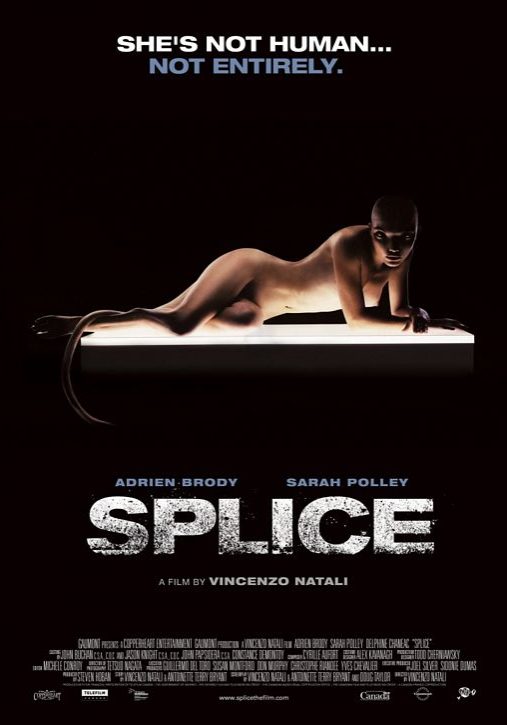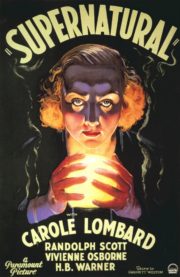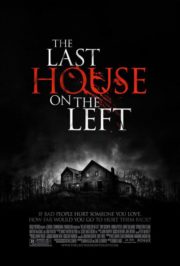Splicing Terror with Science
Imagine tampering with nature to the extent that the created becomes the creator’s nightmare. This dark premise lurks at the heart of “Splice,” a 2009 sci-fi horror film directed by Vincenzo Natali. The movie threads the needle between horror and science fiction as it follows two rebellious genetic engineers, played by Adrien Brody and Sarah Polley, who, in their quest to push the boundaries of science, create a hybrid creature with unforeseeable consequences. Eerily resonant with the quote from the film, “What’s the worst that could happen?”, “Splice” unleashes a narrative ripe with bioethical conundrums and body horror to unsettle any viewer.
The Genesis of Terror
The atmosphere and tone of “Splice” are a concoction of morbid curiosity and creeping dread. The horror is initially cerebral, as viewers grapple with the implications of the scientists’ actions. As the creature, named Dren, evolves, so does the film’s atmosphere, transitioning into a visual and aural creep-fest that ratchets up tension with each scene.
Director Natali cleverly builds fear through a blend of anticipation and uncertainty. The audience is aware that Dren’s existence is an affront to nature, yet they are compelled to discover what lies ahead. Grainy textures, low-key lighting, and a desaturated color palette create a clinical yet otherworldly ambiance that reinforces the film’s central moral ambiguity.
In Sight and Sound, Fear Abounds
The cinematography in “Splice” maneuvers the uncomfortable uncanny valley that Dren inhabits; swaying between human and something else entirely. Unique visual styles, such as lingering close-ups and distorted perspectives, put viewers inside the minds of the protagonists as they confront their invention – and their own human flaws. The special effects serving Dren’s physiology are impressively revolting at times, marking the creature’s evolution as milestones in a descent into horror.
The film’s soundtrack and sound effects are fine-tuned instruments of unease. Harsh, dissonant tones merge with the organic sounds of Dren’s movements, creating a soundscape that is at once enthralling and discomforting. Moments of silence are meticulously placed, creating a sense of foreboding that preludes the lurking chaos.
Humanity’s Monsters
The characters in “Splice” walk a tightrope between scientific brilliance and moral bankruptcy. Brody and Polley deliver performances that are as intricate as they are disturbing, skillfully peeling back layers of character to reveal what fear, ambition, and desperation can spawn. While Dren, enacted by Delphine Chanéac, is an audacious highlight; a canvas of innocence that gradually gets painted with shades of monstrosity.
The film leverages body horror to great effect, knitting it organically into a narrative that questions the nature of humanity. As a psychological and scientific horror, “Splice” avoids the pitfall of gratuitous gore, opting instead for a storyline that intertwines the bizarre and the terrifying in equal measure. Yet, the chilling zeniths are often achieved through stark and shocking visuals rather than narrative intricacy.
More Than Just a Monster Movie
Underneath the flesh-and-blood scares, “Splice” houses themes of parenthood, responsibility, and the Pandora’s box of technological advancement. These thematic currents elevate the film beyond its genre roots, hinting at the real horrors that accompany our scientific overreach and ethical lapses.
However, the question of effectiveness as a horror movie remains polarizing. While “Splice” does not consistently deliver jump scares or a relentless sense of dread typical of more mainstream horror, its intellectual stimulation and the ambience of discomfort make it a distinguished entry in the genre—a thinking person’s horror flick.
The movie will likely resonate with those who appreciate a blend of horror and science fiction – those looking for a reflective and subversive film experience. The subtle horror fan or the scientific-minded viewer may appreciate the nuances, whereas the hardcore gore enthusiasts may find it lacking in visceral thrill.
In terms of comparisons, “Splice” can stand shoulder to shoulder with the bioethical quandaries of “Gattaca” or the creature-feature elements of early Cronenberg works, though it perhaps lacks the latter’s finesse.
The Verdict
“Splice” is an intricate tapestry of horror, blending scientific speculation with deep-seated fears. Its strengths lie in its atmosphere, thought-provoking themes, and strong performances, even if it occasionally stumbles in pacing and coherence. Admirers of horror that comes with a dose of introspection will likely find “Splice” a worthy watch, though those of a more sensitive disposition should be wary of its darker moments. In totality, “Splice” may not satiate every horror appetite, but it’s a commendable venture into the ethical abyss that comes with creation, mutation, and ultimately, confrontation with the monstrous.




